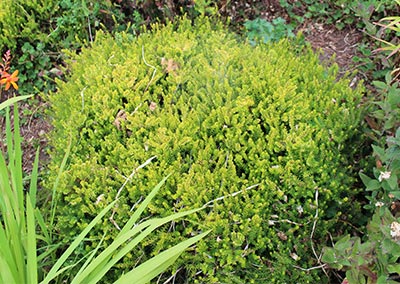Mediterranean Pink Heather
- Scientific Name: Erica x darleyensis
- Garden: Beneficial Insects and Compost Garden
- Plant Type: Shrub
- Evergreen/Deciduous: Evergreen
- Sun/Shade Exposure: Full Sun
- Moisture Requirements: Moist, Well-Drained
Plant Information
Erica - winter heather; Calluna - summer heather
Heathers are some of the best plants for year-round color. Indeed, there are so many kinds of heather that at least one is blooming each day of the year! Flowers are just the beginning of the story though, because foliage of Calluna, Daboecia and Erica—the species that make up Heaths and Heathers—is incredibly varied. Evergreen leaves can be deep green, but they can also be red, orange, yellow, blue or purple!
Flowers: Small bell-shape flowers can be white, pink, mauve, cerise, magenta or purple. Bloom-time varies per species.
Winter/Spring flowers: Erica carnea, Erica darleyensis.
Summer/Fall flowers: Erica cinerea, Erica griffithsii, Erica stuartii, Erica tetralix & Erica vegans
Foliage: Evergreen leaves look like tiny needles and can be green, gold or blue.
Erica x darleyensis 'Mary Helen' is one of the heathers in the Pacific Park demonstration garden
Pink flowers February–April, gold leaves turn gold with orange tips in winter, grows 10″ x 18″.
Size: Most Ericas are low-growing shrubs ranging between 12″ & 24″ tall. Tree heathers (Erica arborea & E. australis) are upright-growing varieties that can reach 20’ in their native habitats. In Portland we see 4-5′ easily, perhaps taller if planted in an area that is not too windy.
Culture: Ericas are happiest in sunny spots with well-drained, moist acidic soil. Several species will adapt to dryness, alkaline soil and partial shade. Prune annually to keep heathers looking full.
Hardiness: Varies per species from USDA Zone 4–9
Problems: Pests and diseases are typically not seen in Portland.
Data Source
https://www.portlandnursery.comPlant Photos



